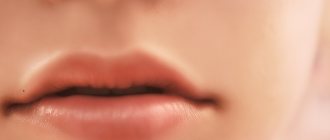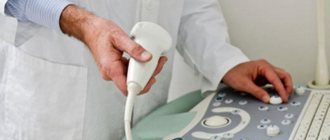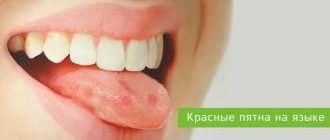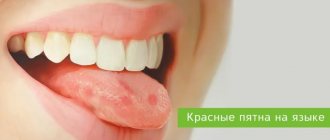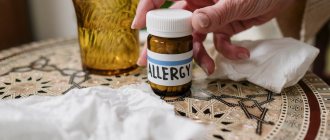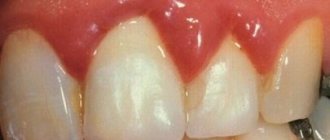From this article you will learn:
- the best ointment for scars and scars on the face and body,
- products with proven effectiveness,
- laser scar removal – prices, before and after photos,
- scar after cesarean section - photo, how to treat.
A scar is an area of fibrous tissue that forms on the skin after damage, such as trauma, surgery, or inflammation. Scar formation on the skin is a natural part of the wound healing process, i.e. regeneration process. Fibroblasts take the main part in this process, because It is these cells that synthesize collagen, which primarily consists of both our skin and scar tissue.
It must be said that the appearance of the future scar will largely depend on what happens to the wound, starting from the moment the skin is damaged - until the moment it is completely healed (this period is 2-3 weeks). It is during this period that the doctor has the opportunity to prevent excessive scarring. But as we said above, scars on the skin can occur not only as a result of injury, but also after inflammatory skin diseases. In this case, we mean scars after smallpox, chickenpox or acne on the face (Fig. 6).
Scars/scars: photo
Pathological scars with excess scar tissue (Fig. 2-3) most often occur after a wound becomes infected, if the wound was sutured with excessive tension on the sutures, or the wound itself was located in an area of skin with high natural tension. We are talking about the neck, shoulders, sternum, areas of the body near the joints. Deterioration of the appearance of the scar can also be caused by late removal of sutures, as well as too long epithelization of the wound (more than 2 weeks).
Cream or ointment for scars and scars - can be used after complete epithelization of the wound surface, when the period of scar maturation begins. Typically this period begins 14-21 days after the wound occurs and will last from several months to an average of 1 year (depending on the size of the wound/scar). During the maturation period, the size of the scar begins to shrink, its redness decreases - due to a decrease in the number of capillaries. And it is during this period that scar cream is more likely to produce results.
Important: the main purpose of using ointment for scars and scars is to reduce the likelihood of pathological scarring (the appearance of hypertrophic scars). Below you will see that to date there is no scientific research that would unequivocally confirm the effectiveness of topical products for reducing scars. The results of clinical studies contradict each other, but researchers agree that the use of ointment for scars still increases the likelihood of a more favorable outcome.
Types of scars (scars) –
Scars on the skin are usually divided into several categories. There are normotrophic, hypertrophic, keloid and atrophic scars/scars.
- Normotrophic scars (Fig. 1) are flat, pale scars, which are an example of normal scarring (most patients experience these). They differ in that they are flush with the surface of the skin, or protrude very slightly above it. At first they will be red or dark red in color, but over time they will become increasingly paler and flatter.
- Hypertrophic scars (Fig. 2-3) - they are distinguished by the fact that they will noticeably rise above the skin level, plus they almost always have an intense red or purple color - due to the presence of a large number of capillaries. They begin to form 2-3 weeks after complete epithelization of the wound, and within 3-4 months their growth is noted (after which further correction downward is possible). By about 1-1.5 years, their sizes become stable and do not change further.
Hypertrophic scar from cesarean section –Hypertrophic scars are an example of a pathological variant of tissue scarring and, as a rule, they are formed after skin incisions are made during surgical operations. Hypertrophy of scar tissue can be a consequence of infection of the wound, or when the surgeon sutured the wound with excessive tension on the surrounding tissue, or if the wound is located in an area of the skin with high natural tension (neck, shoulders, near joints), etc.
- Keloid scars/scars (Fig. 5) – are formed as a result of excessive collagen formation at the wound site. The peculiarity of these scars is that scar tissue continues to grow far beyond the wound itself - even after the wound has already healed. Moreover, if hypertrophic scars are still capable of reduction and can be smoothed out over several years, then the size of keloid scars does not change over time.
- Atrophic scars (Fig. 6) - they look like indentations on the surface of the skin (minus tissue), i.e. located below the surface of the skin. This is what scars on the face look like after chickenpox or acne. The treatment of atrophic scars has significant differences from the treatment of other types of scars, and you can read more about this in the article at the link above.
Can spots go away on their own?
How to quickly remove acne marks, and can they disappear without any help? This question is asked by many patients who are encountering this problem for the first time. It is important to remember that scarring and pigment formations on the skin cannot be ignored; it is imperative to undergo treatment. They do not go away on their own, and without the necessary therapy the situation can only get worse. Therefore, we recommend that you come for a consultation with a dermatologist and, if necessary, undergo an examination.
We recommend
Curacen Essence (20 fl x 2 ml)
Nanoneedles with ultra-thin walls 30G
Nanoneedles with ultra-thin walls 33G
Curacen – for injection
How does scar formation occur?
Scar formation is a natural healing process of the skin after damage (Fig. 7). Initially, the wound surface becomes covered with crusts, and the traumatic defect itself begins to be filled with soft granulation tissue. Gradually, the granulation tissue is replaced by dense fibrous connective tissue (collagen), which is produced by cells called fibroblasts.
Fibroblasts actively produce collagen at the site of skin damage for 3-4 months, which usually leads to a gradual elevation of the scar above the skin level and the formation of a bumpy surface. At the same time, blood capillaries actively grow, causing the scar to become red. Over time, the over-formed collagen begins to gradually break down, and the number of capillaries decreases (the scar decreases in size, becomes smooth, less hard and more elastic, less red).
The period of scar maturation - we have already said above that external cream or ointment for scars and scars - can only give an effect if they are used during the period of scar maturation, during which the scar undergoes active transformation. For example, if at the beginning of this period the scar only increases in size and becomes redder, then over time its reverse transformation begins to occur. Gradually, the scar decreases in size (due to the degradation of excess collagen), and after an average of 7 months it begins to fade due to a decrease in the number of capillaries.
The period of scar maturation begins from the moment of complete epithelization of the wound surface (when there are no longer crusts), and will last on average up to 1 year. But in some patients this period can take only 4-6 months, and in rare patients it can take up to 2 years, and this difference in time depends on several factors. For example, the size of the original wound/scar size, whether there is skin tension in the scar area, and age (patients under 30 years of age have a slower rate of scar maturation than patients over 55 years of age).
Important: Clinical studies show that the slower the rate of scar maturation, the worse its final appearance.
Causes of allergic reactions on hands
The main triggering factor for the development of allergic dermatoses is single or regular contact with the pathogen. In this case, treatment is aimed at completely eliminating the allergen to which the body is hypersensitive. It is quite difficult to determine, but among the most common causes of hypersensitivity are antigens from plants, animals, fungi, insects, foods, chemical compounds and drugs.
Also, allergic reactions on the fingers and other parts of the upper extremities occur due to:
- Gastrointestinal diseases. Diseases such as biliary dyskinesia, chronic gastritis and pancreatic dysfunction can trigger the development of allergic dermatitis and contribute to its transition to a chronic form.[3]
- Violation of the barrier function of the skin under the influence of mechanical, chemical and infectious agents. A broken epidermal barrier facilitates the penetration of allergens through the skin, the development of infection, and causes mild skin irritation.[7]
- Unfavorable environmental conditions. High levels of environmental pollution lead to an increased susceptibility of the population to allergic dermatoses.[8]
- Genetically determined factors. If both parents are prone to allergic diseases, the likelihood of developing neurodermatitis and other allergic dermatoses in the child is 70%.[9]
How to get rid of scars -
How to get rid of scars will depend on the type of scar, as well as its age. There are several treatments that can help make them less noticeable and improve their appearance. Keep in mind that, unfortunately, it is hardly possible to improve, but completely get rid of scars without a trace.
In this section of the article we will focus on –
- cream for scars and scars (Dermatix, Kelo-Kote),
- silicone bandages (plasters),
- scar massage and pressure bandages,
- laser scar removal,
- surgical removal of scars.
Also used to treat scars are:
- medium or deep chemical peeling,
- dermabrasion technique (skin resurfacing),
- cosmetic camouflage (make-up or tattoo on scars).
What it is
This term suggests a symptom complex of secondary rashes. They appear after various forms of skin inflammation, pimples, and acne. Considering that its debut usually occurs in adolescence, the remaining traces pose a serious problem for youth and affect the psychological state of young people. If acne develops at an older age, the patient may also experience post-acne; treatment in this case is complicated by the general condition of the skin.
The consequences come in the following forms:
- hyperpigmentation;
- pathological scars;
- atheromas;
- milia (whiteheads).
Treatment and subsequent recovery of patients requires an integrated approach.
The best external remedy for scars and scars -
We have already said above that external preparations will be effective only if they are used during the period of scar maturation (24stoma.ru). Moreover, an ointment or cream for scars and scars must be used for at least 2-3 months before you can notice the first results. If you missed the period of scar maturation, then external remedies will not be effective and you will need more radical treatment methods (for example, laser). Let's look further at what external means we can use to get rid of scars.
1) Remedies for scars and scars based on silicone -
Scar products based on medical silicone have been used since approximately 1983. Silicone gels work on the principle of occlusion and hydration. After applying silicone to the surface of the skin, it is absorbed, leaving an invisible “occlusive bandage” on the surface (this layer prevents the evaporation of water from the surface of the skin/scar, but at the same time allows air to pass through). As a result, this increases the hydration of scar tissue, i.e. saturating it with water reduces the growth of blood capillaries.
As a result, this has a positive effect on the restructuring of the scar during its maturation, which increases the likelihood of reducing its size (while simultaneously improving such indicators as elasticity and extensibility). The hardness of the scar decreases, its color improves, and itching decreases. It must be said that in addition to silicone gels, there are also special silicone dressings that are worn from 12 to 23 hours daily - for several months.
- Gel Dermatix (USA) – costs 2,400 rubles per 15 g tube.
- Kelo-Coat gel (USA) – price 2400 rubles per 15 g tube.
- Zeraderm Ultra - price about 5,000 rubles per 20 g tube (this is an analogue of the first two drugs, but with a richer composition, which, in addition to silicone, additionally includes coenzyme Q10, vitamins A and E, as well as SPF 15).
The silicone dressings we talked about above are made on a fabric basis and are translucent. They have multiple uses, i.e. you don't need to change it to a new one every day. Silicone dressings come in specific sizes, but you can cut the size you need with scissors. The silicone bandage should be on the skin for 13 to 23 hours daily; it can only be removed for antiseptic treatment of the skin and the bandage itself.
- Dermatix silicone dressing - price from 1,400 rubles (size 4x13 cm), about 5,000 rubles (size 13x25 cm).
2) Scar remedy based on onion extract –
Onion extract is used in the treatment of burns, hypertrophic and keloid scars. It contains the flavonoids quercetin and kaempferol, which have an inhibitory effect on fibroblast proliferation and collagen production, which directly affects the formation of scar tissue. In addition, onion extract increases the expression of MMP-1 (matrix metalloproteinases, which belong to endopeptidases - enzymes that destroy the extracellular matrix of connective tissue).
Matrix metalloproteinases tend to destroy newly formed pathological collagen, which makes up scar tissue. An example of a drug with onion extract is the Contractubex gel. It also contains sodium heparin, which increases the hydration of scar tissue, i.e. saturating it with water. The drug Contractubex (Germany) costs only about 600 rubles for a 20 g tube and about 1000 rubles for a 50 g tube.
3) Products with proteolytic enzymes –
There is a Russian drug Fermenkol, which contains a complex of proteolytic enzymes (collagenolytic proteases), as well as sodium heparin. It is understood that these enzymes should destroy the excessively formed pathological collagen that makes up hypertrophic and keloid scars. Fermenkol gel costs from 1,500 rubles per 30 g tube, but there is also a form in the form of a solution (for electrophoresis).
There are clinical studies that show that enzymes penetrate the skin quite poorly due to the large size of the molecules. Therefore, the most effective method is the use of Fermenkol solution in medicinal electrophoresis procedures (this method significantly increases the penetration of enzymes into the rumen). The phonophoresis technique with gel will be slightly less effective, and the most ineffective method is conventional gel applications. Therefore, it is better to use gel applications only during breaks between electrophoresis courses, and not as monotherapy.
How to remove acne spots with Fermencol gel
A specially developed Fermenkol line will help remove post-acne spots, aimed at correcting skin texture, normalizing color and restoring healthy tissue. All Fermenkol products contain 9 active collagenase enzymes, which “eat up” the destroyed vascular endothelium, improve local capillary circulation and, as a result, even out skin color.
Fermenkol also eliminates deformed collagen and, penetrating the dermis, acts only on pathological tissue, without affecting intact (healthy) areas of the skin. The result: clean, smooth skin without pigmentation.
To enhance the cosmetic effect, experts recommend using Fermenkol together with phonophoresis. The course of procedures can be completed either in a clinic at your place of residence or at home with a portable Reton device for phonophoresis. You can purchase Fermenkol products by placing an order online on the official website or in pharmacies in your city. Before use, consult a specialist; he will prescribe the optimal number of procedures. It is easy to get a consultation from a practicing doctor; to do this, you need to click the “doctor” button, describe your situation in detail and attach a photo of the damaged area.
Fermenkol products have already helped many people get rid of acne spots, here is just one of the reviews:
Remember! The sooner you start the course, the faster you will achieve the desired result and will again be able to enjoy healthy and beautiful skin.
Scar cream: reviews of effectiveness
It makes no sense to search the Internet for reviews of ointment or cream for scars and scars, because... At the moment, almost 99% of all reviews on forums are hidden advertising and anti-advertising. There are hundreds of marketing agencies in Russia, whose thousands of employees (under the guise of consumers) write posts on forums about medications, cosmetics, toothpastes and other various products. Therefore, we will use the results of published scientific studies, which are available on the website of the National Library of Medicine.
In general, clinical studies (source) show that silicone-based products are indeed capable of somewhat reducing the volume of scars, reducing their hardness and increasing elasticity, as well as improving the color of hypertrophic scars and keloids. When used prophylactically on the area of surgical incisions, products with silicone are highly likely to prevent the development of pathological types of scars that occur with hyper-formation of scar tissue.
Regarding the effectiveness of drugs based on onion extract, there are 2 very large clinical studies (source), in which 771 and 1269 people took part. The study showed that Contractubex also led to an improvement in the appearance of hypertrophic and keloid scars, and when used prophylactically immediately after epithelization of the wound, it increased the likelihood that the scarring will not be pathological.
However, there are comparative studies of the effectiveness of products with silicone and onion extract. For example, “Comparison of efficacy of silicone gel, silicone gel sheeting, and topical onion extract including heparin and allantoin for the treatment of postburn hypertrophic scars” 2009, authors – Karagoz H., Yuksel F.. (translation – “Comparison of effectiveness silicone gel, silicone gel coating, and topical onion extract, including heparin and allantoin, for the treatment of hypertrophic burn scars.” This study concluded that onion extract formulations were slightly less effective than silicone gels and silicone dressings.
In addition, we found 2 more studies interesting, which concluded that combination therapy (a drug with silicone + onion extract) gives a more pronounced result in improving the appearance of the scar than treatment with any of these drugs separately. This is stated, for example, in the study “Contractubex® and Silicone-gel sheeting to treat keloid and hypertrophic scars concluded that co-administration led to the best response”, authors – Hosnuter M., Payasli C..
Conclusions: There are actually many more clinical studies, and some of them provide conflicting results. But in this review, we tried to present only studies with high 1-2 levels of evidence (in total there are from 1 to 5, where 1 is the highest), and in which a large number of subjects took part. Therefore, we can conclude that products with silicone and onion extract do increase the likelihood that the appearance of the scar will be better than when these products are not used.
Well, the last thing about the Russian remedy Fermenkol. Unfortunately, there is no information on the effectiveness of this drug in the Cochrane Research Library. Clinical studies were carried out only at the local level, but they show (source) that a good result can only be obtained by using Fermenkol solution in drug electrophoresis procedures (and the effect will be visible after the 1st course of treatment of 10-15 procedures), or using phonophoresis technique with gel.
The use of conventional gel applications (in the form of monotherapy) gives a very mediocre, statistically insignificant result. We hope that this argument of ours has helped you understand which ointment for scars or cream for scars and scars will be better.
Causes and symptoms
Hordeolum occurs due to a bacterial infection. In most cases, this is Staphylococcus aureus - a gram-positive bacterium that can survive on the skin and mucous membranes.
Various factors provoke the appearance of stye on the eye:
- hypothermia, weakened immunity, vitamin deficiency;
- failure to comply with eye and eyelid hygiene rules;
- stressful conditions, lack of proper rest, healthy sleep;
- infectious diseases or recovery period after them;
- the presence of other problems with the organs of vision - conjunctivitis, blepharitis;
- elevated levels of lipids in the blood.
The use of low-quality cosmetics or wearing contact lenses can also become factors provoking the disorder, but they are not the root cause of the pathological process.
The main symptoms of the pathology:
- itching and burning of the eyelid, increased tearfulness;
- sensation of a foreign object under the eye;
- redness, swelling, hardening of the lower or upper eyelid;
- pain when touching the damaged area and when blinking;
- pus in the form of a yellowish head on the swelling;
- sometimes – inflammation of the nearest lymph nodes, fever.
How to prevent scars -
It's impossible to completely prevent scars from forming, but there are a number of things you can do to help your scar become less noticeable and heal better...
- If a wound forms on the skin, immediately clean it of dirt and disinfect it.
- If the wound is deep, use a pressure bandage to bring the edges of the wound closer together.
- Contact your surgeon/traumatologist immediately.
- Always protect the wound from water (do not wet wounds with water) until the wound is completely epithelialized and the last scabs fall off. This rule applies to any type of wound, including wounds from surgery with sutures.
- Do not pick at the wound or tear off the scabs under any circumstances, as... this will definitely lead to the formation of a significant scar.
- If the wound (sutured surgical wound) is located in a place where the skin has tension (neck, shoulders, near joints, etc.) - it is very important during the entire healing period, as well as for a long time after, to use tapes to reduce tissue tension . Tapes are tapes that resemble an elastic adhesive plaster. Reducing tissue tension in the wound area (ripening scar) will significantly reduce the risk of the formation of hyper-volumes of scar tissue.
- After complete epithelialization, use any remedy for scars and scars. This can be a special ointment for scars and scars based on onion extract, or a silicone-based gel/plaster (which is more effective), or a combination of both (which is even more effective).
- Gently massage the scar area as the scabs fall off after healing. Massage helps prevent the formation of excess scar tissue.
Pressotherapy and massage in the treatment of scars –
Pressotherapy involves the use of compression bandages.
The fact is that mechanical pressure exerted on the scar leads to compression of the capillaries in the scar tissue and accelerates the maturation of the scar. Compression bandages have been used for many years as the standard of care for the treatment and prevention of severe burn scars. Unfortunately, compression garments can be uncomfortable and unsightly, making it difficult for patients to adhere to treatment. Pressotherapy should begin to be used at an early stage of the scar maturation period, and pressure on the scar should be applied for at least 23 hours a day (for at least 6 months) - while the scar maturation period lasts. However, such treatment can be started no earlier than the wound is completely epithelialized. Compression “garments” can take the form of bandages, elastic sleeves, gloves, stockings and suits.
Massage of scars and scars - can be effective especially on post-operative scars, and will be a good addition to topical products based on silicone and/or onion extract. It is believed that massage accelerates the maturation of collagen, promotes the restructuring of scar tissue, and also leads to an increase in the elasticity of the scar. You can start massage only after complete epithelization of the wound (when the last crusts fall off). But keep in mind that the massage should not be harsh, because... The strength of scar tissue is inferior to that of intact skin.
How to cure with the drug Curasen
When looking for an option on how to effectively remove post-acne on the face, placental therapy comes first. In particular, dermatologists recommend using the drug CURACEN. Due to the fact that it is made on the basis of human placenta hydrolyzate, it has the following effects:
- deep hydration and nutrition of the skin from the inside, prevention of inflammatory processes;
- increasing elasticity and firmness;
- compaction and alignment, creation of an internal cellular framework;
- smoothing out fine, moderate and deep wrinkles;
- elimination of hyperpigmentation, as well as reducing the severity of dark circles in the lower eyelid area;
- tightening in conditions of gravitational ptosis of soft tissues;
- stimulation of the body’s own synthesis of new cells, as well as acceleration of metabolism;
- assistance in restoring the dermis after aggressive cosmetic procedures or plastic surgery.
Laser scar removal: prices, before and after photos
Laser scar removal is carried out using a procedure called laser skin resurfacing. This method is suitable for mature scars whose size has stabilized and is no longer increasing. Laser resurfacing works well not only with hypertrophic and keloid scars (for example, a cesarean scar can be almost completely removed with a laser), but also with shallow atrophic scars after acne.
Laser scar removal: before and after photos
What lasers can be used:
- Fully ablative lasers – fully ablative “carbon dioxide CO2 laser” and “erbium Er:YAG laser” – can improve the condition of hypertrophic and keloid scars by 50-81% after just 1 procedure.
However, this type of laser is quite traumatic, and re-epithelialization of the laser-treated skin flap will last 7-10 days (for CO2 laser) and 4-7 days (for Er:YAG). Er:YAG laser is less traumatic for tissue, but requires more procedures to achieve a similar effect - compared to a CO2 laser. We do not recommend the use of these types of lasers - not only because of the long rehabilitation period, as well as a large number of side effects, but also because of the fairly high percentage of relapses of hypertrophic and keloid scars.
- Fractional ablative lasers - when using conventional ablative lasers, which we described above - absolutely the entire surface of the skin flap is subject to thermal damage. But ablative fractional CO2 or Er:YAG lasers act on the skin fractionally (i.e., between micro-areas of thermal damage there will be areas of undamaged skin). This can significantly reduce the rehabilitation period and reduce the risk of side effects. Many patients note that fractional ablative lasers allow them to achieve a more aesthetic appearance of the scar - compared to completely ablative lasers.
- Pulsed dye lasers (PDLs) – they are non-ablative lasers, i.e.
they leave the surface of the skin intact, and all areas of thermal damage occur in the deep layers. For the treatment of hypertrophic and keloid scars, ILCs with a wavelength from 585 to 595 nm are used, for example, the VBeam Perfecta laser. These lasers greatly reduce the vascularization of scars (the number of blood capillaries), which determines their bright red/purple color. They also significantly reduce the height and thickness of hypertrophic and keloid scars. For example, in the authoritative scientific journal “Dermatologic Surgery” in 2016, clinical studies were published that showed that the severity of hypertrophic scars after 1-2 sessions of ILC decreased immediately by 57–83%. It should also be noted that the risk of relapse after ILC was the smallest - in comparison with all other types of lasers. In our opinion, ILCs are the optimal choice for the correction of hypertrophic scars and keloids, however, in this case, a larger number of procedures may be required.
Laser scar removal (ICL, fractional ablative) –
Laser scar removal: prices Cost varies depending on the area where the scar is located, as well as its size. Therefore, to remove scars with a laser, the cost per 1 cm2 will average about 1,800 rubles (the upper price limit is up to 3,000 rubles).
Possible side effects after the procedure -
- pain, burning (disappears within 12-72 hours),
- swelling (disappears within 48 hours),
- bleeding (disappears within 12 hours),
- formation of crusts, peeling (within 5-7 days),
- complete healing after laser scar removal – 10-21 days,
- risk of pigmentation,
- risk of infection,
- risk of scar re-formation.
Types and stages of development of hordeolum
Depending on the location of the lesion, it can be of the following types:
- External stye
. More common according to statistics. The infectious-inflammatory process is localized at the edge of the eyelid, since the infection settles in the sebaceous gland of Zeiss or in the ciliary bulb. - Internal stye on the eye
. It has another name - meibomite. It is caused by the penetration of pathogenic microorganisms into the passage of the meibomian glands located on the back side of the eyelid margin.
By type they distinguish:
- Hot barley
. It is characterized by the classic development of the disease; infection is localized in the ciliary pocket - the bulb or Zeiss gland. With therapy it goes away in about a week. - Cold stye (chalazion, meibomian cyst)
. The inflammatory process affects the meibomian glands. It develops very slowly. Recovery takes 1–2 months. If there is a very large stye, surgical removal is possible.
Inflammation goes through the following stages:
- Formation of a purulent core
. A small reddish swelling causes discomfort when moving the eyelids. - Formation of an abscess
. The patient’s condition at this stage can only be alleviated by medications. - Breakthrough of pus.
It does not indicate recovery, but the patient feels much better. During this period, you need to keep your eyes clean and use prescribed medications and ointments.
Surgical treatment of scars –
Surgical treatment of scars involves excision of scar tissue and creation of a cosmetic suture. There are various methods of tissue suturing (for example, intradermal), which make it possible to ensure that the seam will be practically invisible in the future. For cosmetic stitches, very thin suture material is used.
How to get rid of scars at home -
It all depends on your perception of the “magnitude of the problem.” If the scar/scar causes you significant concern and you want to get a quick result, it is best to use combination therapy (for example, silicone dressings or Dermatix gel + electrophoresis or phonophoresis with the drug Fermenkol). Unlike electrophoresis, phonophoresis with Fermenkol can be done at home, which is possible using special inexpensive devices that are sold in any online store.
Another option is a combination of silicone gel/plaster and Contractubex. To get rid of scars at home, you will have to be patient. Of course, you will be able to achieve faster results by combining a silicone patch or gel with the phonophoresis/electrophoresis method of the drug Fermenkol. In this case, you will be able to see the result after 1-2 courses (1 course of electrophoresis or phonophoresis consists of 10-15 procedures daily, the interval between courses is 7-10 days). If you use only gels or silicone patches, the first results may be noticeable only after a few months.
Additional tips to improve the appearance of scars –
- Avoid exposing the scar to sunlight, as... this slows down the healing process and makes the scars more noticeable in color. If the scar is located on an area of skin exposed to the sun, then use sun protection (SPF 30-50) every time before going out into the sun.
- Massage the scar area every day (at least 2 times a day for 3-5 minutes) to avoid excessive formation of the rough fibrous tissue that scars are made of. You can do a massage either without anything or using oils or gel with silicone (see brands above).
- Continuously exfoliate the surface layer of skin, which consists of dead skin cells, using superficial chemical peels. It also reduces the risk of rough scars forming.
How to quickly lighten or conceal
This is only possible if you use an effective integrated approach. That is, here it is necessary to combine competent home care and post-acne treatment from a cosmetologist, and you also need to take the necessary preventive measures.
Cosmetic and therapeutic products provide noticeable positive results, including:
- retinol;
- soft acids;
- keratolytics;
- natural ingredients, including badyagu and arnica.
However, they must be used with caution. Skin with acne scars is sensitive and needs delicate and competent care; active components of cosmetics can only aggravate the situation. In particular, it is important to remember that retinol is UV sensitive and should not be used if you plan to go out in the sun. That is why it is not recommended to get rid of this problem on your own, but should be done under the supervision and control of a doctor.
Treatment of scars with alternative means -
Let's say right away that these are not very effective treatment methods if we consider them as the main method of treatment. For example, we can talk about applying various oils to the scar - simultaneously with its massage. You can also use a product such as Aloe Vera, or exfoliating agents with fruit acids (for the latter, some use lemon juice or diluted apple cider vinegar).
For hypertrophic scars, it is really necessary to help desquamate the stratum corneum of the epidermis. But all these are only minor means that will not “make a difference”, but will only be a good addition to the drugs and treatment methods that we described above.
Aloe vera
Aloe Vera is a natural, herbal remedy for scars and scars, which has anti-inflammatory and antibacterial effects. It works as an emollient that helps the healing process and promotes the growth of healthy cells, improving skin texture.
How to use - First, peel off the outer layer of the Aloe Vera leaf until a jelly-like substance appears. After this, apply the gel to the scar, massaging the scar in a circular motion until the Aloe Vera is completely absorbed. After 30 minutes of this, wash off the remaining aloe vera with water. Apply Aloe Vera gel 2 times a day and you may see results in 3-4 months. Important: Aloe Vera should not be used on open wounds.
Lemon
Lemon contains alpha hydroxy acids, which have a chemical peeling effect. As a result, lemon juice removes dead skin cells, promotes the growth of new cells, and improves skin elasticity.
How to use: Apply lemon juice to the scar (if your skin is sensitive, you can dilute the juice with water or oil). Wait 10 minutes and rinse with warm water. The procedure should be repeated once a day. Keep in mind that lemon can discolor your skin and make it very sensitive to sunlight. Therefore, be sure to apply sunscreen or hide this area of skin from the sun to avoid hyperpigmentation.
Apple vinegar
Just like citric acid, malic acid is an alpha hydroxy acid that is used for chemical peeling of the skin. Therefore, it will also help exfoliate and remove dead skin cells.
How to use: Mix equal amounts of apple cider vinegar and water. Apply this solution to the scar using a cotton swab. Leave on for 5 minutes and then rinse with water. Repeat once a day.
Important : Keep in mind that exfoliators based on lemon or apple cider vinegar will be much less effective than special exfoliating skin creams containing alpha hydroxy acids (which also have a moisturizing effect).
Tea tree oil
Tea tree oil reduces scars and blemishes on the skin due to its anti-inflammatory and healing properties. Just keep in mind that you should never use tea tree oil undiluted.
The first use is to add 4 drops of tea tree oil to 2 tablespoons of water. Wet the scar with this solution 2-3 times a day.
The second option is to mix 2-3 drops of tea tree oil with 1 teaspoon of almond oil. Apply this mixture to the scar and leave for 30 minutes before rinsing with water. Use once daily.
Sources:
1. National Library of Medicine (USA), 2. Cochrane Library (Cochrane Library for Scientific Research), 3. National Center for Biotechnology Information (USA), 4. The composition of the products was taken from the official websites of the manufacturers.
Ways to get rid of bruises
Most often, the appearance of a bruise is preceded by a strong blow, which cannot be ignored. This injures small vessels, a small amount of blood flows out of them and permeates the subcutaneous tissue and lower layers of the skin. In response to injury, local swelling occurs - a protective reaction of the body. At this stage, the bruise is not yet visible, but you already need to take active action. The goal is to reduce tissue permeation with blood.
In order to quickly reduce swelling at the site of a bruise, it is necessary to use agents that cause vasospasm. Cooling with ice works well for this, but a frozen piece of meat wrapped in film and a thin towel will also work. It must be applied to the site of injury for 20 minutes. After cooling, the ice is removed, but the procedure can be repeated after 15-20 minutes. Constantly keeping the cold near the bruise is dangerous and can cause even more damage.
Home remedies can help relieve swelling. For this you can use:
- a compress made from a solution of vinegar or vodka;
- onion gruel with salt;
- applying a cut aloe leaf;
- half a raw potato.
Folk remedies against bruises can be used at an early stage, immediately after a bruise. A mixture of garlic and vinegar pulp and lavender essential oil, which should be applied to the injury site, are considered effective. But you need to be careful; minor bruises can be treated at home without the help of a doctor.


